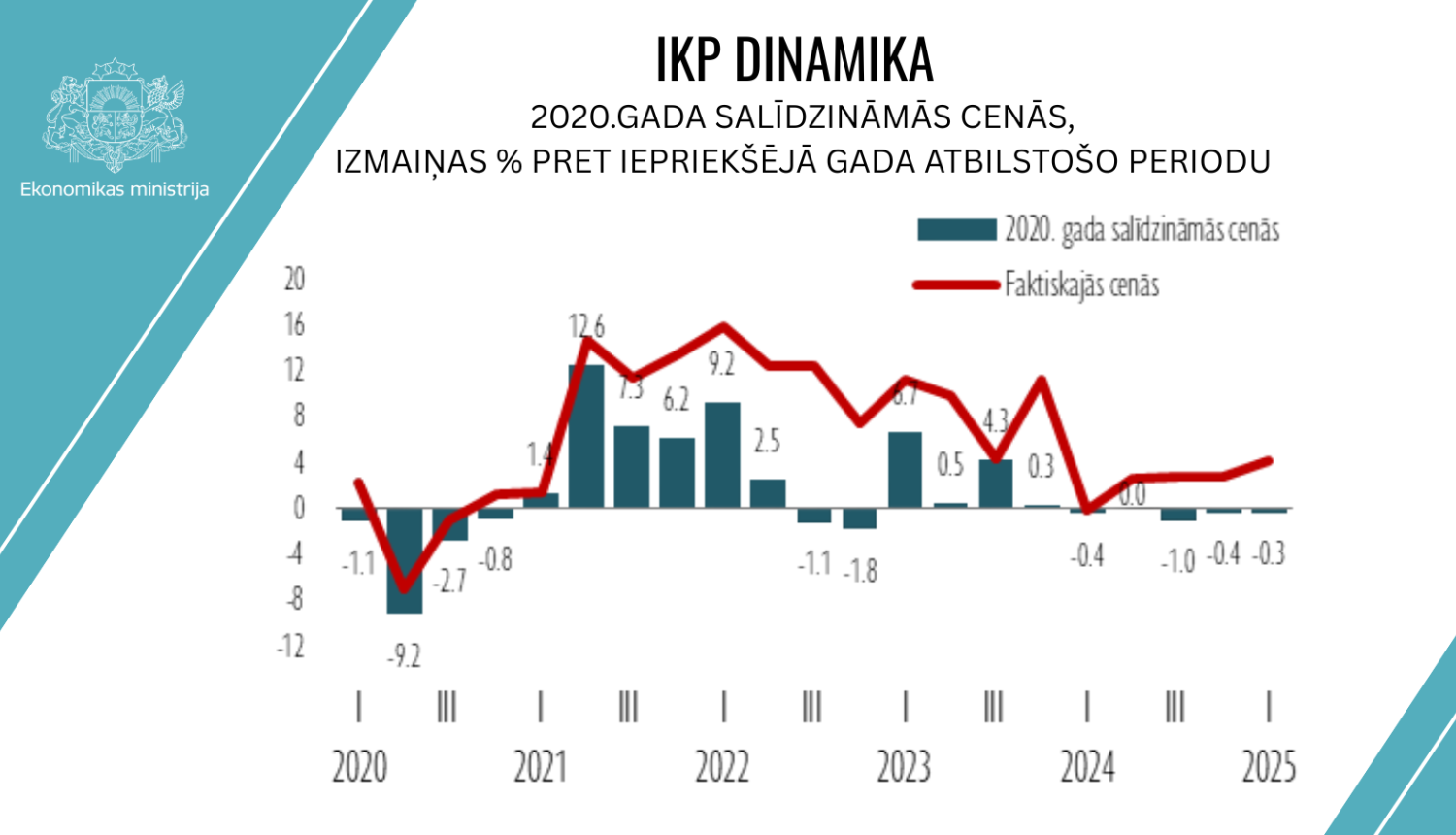Translated using ChatGPT service.
Despite the still high global uncertainty, the latest GDP data overall point to cautiously positive trends in the economy, as indicated by both the increase in investment and the rise in activity in the construction sector.
“Economic development continues to be influenced by the geopolitical situation and the associated uncertainty in the region. Although in the first quarter of this year Latvia’s economic growth rate remained close to last year's level, the improvement in business sentiment and the positive growth rates in certain sectors suggest that the period of slow growth may be overcome, and economic growth may accelerate during the rest of the year,” emphasized Minister of Economics Viktors Valainis.
According to data from the Central Statistical Bureau, in the first quarter of this year, GDP at constant prices was 0.3% lower than a year earlier, while at current prices it increased by 4.5%.
Over the year, the average monthly wage increased by 8.3%. At the same time, price growth was more moderate, strengthening residents’ purchasing power. Nevertheless, consumers remain cautious, as evidenced by a 1.1% decline in household consumption.
There was a sharp increase in investment in the first quarter of 2025. Gross fixed capital formation grew by 6.5% year-on-year, which can be partly explained by the low base effect after weak investment activity in the previous year, as well as accelerated inflows of European Union funds and increased activity in construction and equipment procurement. Investments in dwellings, buildings, and structures increased by 9%, while investments in machinery and equipment rose by 3.2%. Investments in intellectual property products also increased by 1.5%.
The volume of exports of goods and services in the first quarter was 2% higher than a year ago. Goods exports increased by 0.2%, while services exports rose by 7.8%. The main export goods were wood and wood products (excluding furniture), electrical appliances and equipment, as well as mineral products.
Import volumes in the first quarter of this year were also higher than a year ago. In the first quarter of this year, imports increased by 7.8%. Goods imports rose by 6.9%, while services imports increased by 11.8%.
At the beginning of the year, growth was primarily driven by the construction sector and service industries, especially information and communication technology and financial services. The increase in investment volume and export growth are assessed positively. Overall, Latvia’s economy remains resilient, although the pace of growth is limited by a decline in industrial output and cautious consumption dynamics.
The construction sector experienced a sharp increase in production volumes—by 9.6%. This was mostly driven by a 40.7% increase in civil engineering volumes, related to large-scale road and bridge construction projects.
In the services sector, overall production volumes in the first quarter of this year remained at the same level as the previous year. However, some sectors experienced growth—ICT by 4.6%, the financial and insurance sector by 3.4%, and the professional, scientific, and technical services sector by 1.2%. In the first quarter of this year, the volume of accommodation and food services also increased—by 4.5%. According to CSB data, in the public services sector, value added at constant prices was 4.9% lower than a year ago, while at current prices it increased by 6.1%.
The decrease was largely driven by a 9.5% decline in the electricity, gas supply, and heating sector, as electricity production volumes fell significantly. Meanwhile, manufacturing experienced a slight decline of 0.9%. Within manufacturing sub-sectors, there was growth in wood processing—by 3.6%, in the production of non-metallic mineral products—by 6.8%, and in the production of chemicals and chemical products—by 7.2%. Food production remained at last year’s level. The most significant declines were observed in the production of fabricated metal products and electronic and optical equipment.



